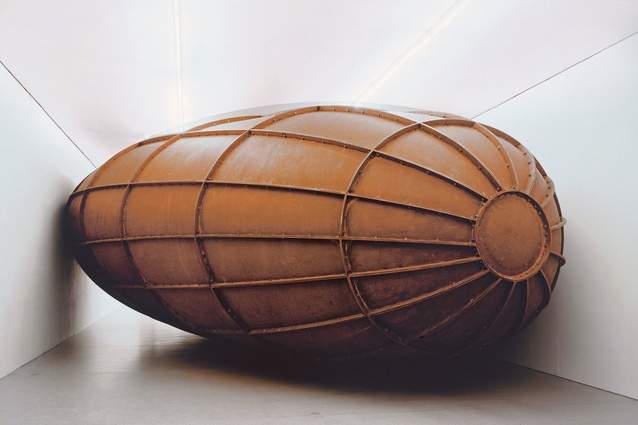Anish Kapoor
Fresh from doing Gangnam Style (for a cause), the mega artist puts his works on show at the MCA.
Overview
Somewhere between painting, sculpture and architecture is the work of Anish Kapoor. This is the first major Australian exhibition of the British artist, and it presents a wide, retrospective range of pieces preoccupied with the nature of visual perception in relation to physical space.
The artist is a magician and Sky Mirror, on the MCA front lawn, is his best kind of magic. The convex curvature of the huge stainless steel circle creates an inverted image of the environment around it, bringing the sky down to the ground. As you walk around the mirror, it reflects a moving image of the clouds - almost a type of lo-fi, real-time video art. It’s nothing short of extraordinary, and dynamic in a way that public sculpture rarely is. The harbour setting adds another, new dimension to Sky Mirror, as the work forms a conversation with Sydney’s successful objects of scale: the Opera House and Harbour Bridge.
By bending light, colour and form, Kapoor manipulates the air itself around his works. True proportions are hidden, visual perception is twisted, holes are created in space and, to quote Karl Marx, “all that is solid melts into air”. Some works, like the stainless steel S Curve, hold a Coney Island-like ability to distort the viewer’s body. There is something quite compelling about seeing yourself reflected in a work, and it is this reflection that animates the sculptures. Kapoor’s art needs an audience to be complete, so for all their industrial materials, they are strangely human works.
Other works are auto-generated objects that appear to manifest without the artist’s involvement. The pigment and wax sculpture My Red Homeland is formed and reformed by a massive, motorised steel arm that rotates hourly. Its gigantic scale belies its vulnerability; the wax is in a constant state of gravitational collapse.
Memory is just as awe-inspiring. Squeezed into the corners of the gallery space, it’s an oversized, bomb-like torpedo on the outside, and a boundless void of negative space on the inside. We are unable to see the object as a whole, and must roam around it, piecing together our memories of its planes and forms. The distinct, earthy smell of the steel and the illusory limitlessness of its interior makes Memory an oddly emotional and very beautiful experience.
This is what sculpture is asking artists to do: create inclusive, inviting and intimate works that are not distinct from the viewer, and that solve the problem of scale. Beyond creating big objects, Anish Kapoor makes people in galleries play, engage and talk to each other — they are not spectators but participants. This is a staggering exhibition, by a major artist.





